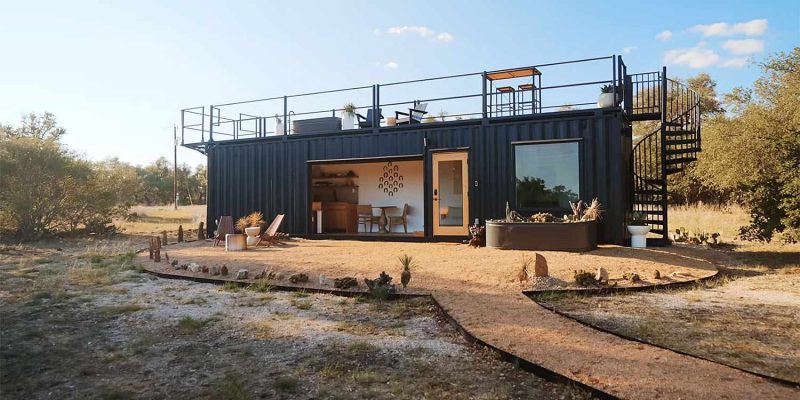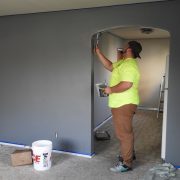Are you considering making the switch to a container home?
Before you dive into this unique living experience, it’s important to be aware of the challenges that may arise. From zoning regulations to insulation and interior design, there’s a lot to consider.
We’re here to help. In this article, we’ll provide you with valuable tips and advice for a smooth transition into your container home, ensuring that you’re well-prepared for the journey ahead.
Understanding Container Homes
Container homes are residential structures made from repurposed shipping containers. These containers are typically made from steel and are designed to be durable, weather-resistant, and transportable.
They offer an affordable and sustainable housing solution, perfect for those looking to minimize their environmental impact.
However, there are a few key things you need to know before diving into container home living.
First, consider your local building codes and regulations, as they may have specific requirements for container homes.
Additionally, understanding the various design options and modifications available is crucial.
From insulation and ventilation to plumbing and electrical systems, knowing how to customize your container home to suit your needs is essential.
Zoning and Building Codes
To ensure a smooth transition into container home living, it’s important to familiarize yourself with the zoning and building codes in your area. These codes are regulations set by local authorities to ensure safety, functionality, and aesthetics in the construction and use of buildings.
Here are two key points to consider:
- Zoning regulations: These govern how land can be used in different areas. They specify whether container homes are allowed in certain zones, such as residential or industrial areas. It’s essential to check whether container homes are permitted in your desired location and any restrictions or requirements associated with them.
- Building codes: These codes outline the technical standards for construction, including structural integrity, electrical systems, plumbing, and fire safety. Ensure that your container home design and construction comply with these codes to avoid any legal issues or safety concerns.
Dealing With Insulation
Insulate your container home properly to maintain comfortable indoor temperatures and energy efficiency. When it comes to insulating your container home, there are a few options to consider.
One option is to use spray foam insulation, which provides excellent thermal resistance and seals gaps effectively.
Another option is to install rigid foam insulation boards, which are easy to cut and fit.
Additionally, you can use fiberglass insulation, which is cost-effective and widely available.
Whichever insulation method you choose, make sure to properly seal all joints and gaps to prevent air leakage.
Proper insulation won’t only keep your container home comfortable, but it will also help reduce energy consumption and lower utility bills.
Plumbing and Electrical Systems
Here are some tips to help you navigate this aspect of your container home:
Plumbing:
- Plan your plumbing layout carefully to optimize space and minimize the need for extensive piping.
- Use flexible pipes and fittings to accommodate the movement and settling of the container.
Electrical Systems:
- Hire a licensed electrician to ensure the safety and compliance of your electrical system.
- Install a sufficient number of outlets to meet your power needs without overloading circuits.
By paying attention to these important details, you can avoid future headaches and enjoy a well-functioning container home.
Creating Adequate Ventilation
Proper ventilation is essential to ensure a healthy living environment and prevent issues like mold, condensation, and stale air.
- Start by installing windows and vents strategically throughout your container home. Windows not only bring in natural light but also allow fresh air to circulate. Vents, such as exhaust fans, can be placed in areas prone to moisture, like the bathroom and kitchen, to remove odors and excess humidity.
- Consider incorporating a mechanical ventilation system, such as a heat recovery ventilator (HRV) or an energy recovery ventilator (ERV), to continuously exchange stale indoor air with fresh outdoor air.
Interior Design Challenges in Container Homes
To effectively address interior design challenges in your container home, consider utilizing versatile and space-saving furniture arrangements. This will help you make the most of the limited space available and create a functional and visually appealing living area.
Here are a few tips to help you overcome interior design challenges in your container home:
- Opt for multipurpose furniture: Invest in furniture pieces that can serve multiple functions, such as a sofa bed or a coffee table with storage compartments.
- Use vertical space: Make use of the vertical space in your container home by installing shelves, hanging plants, or using wall-mounted storage solutions.
- Choose light and neutral colors: Light colors can make your space appear larger, while neutral tones create a calming and cohesive atmosphere.
- Maximize natural light: Install large windows or skylights to bring in natural light and make your container home feel more open and spacious.
Cost and Budget Management
To effectively manage your budget and expenses when transitioning to a container home, it’s important to carefully consider your costs and prioritize your spending.
Start by creating a detailed budget that outlines all the necessary expenditures, such as purchasing the shipping containers, hiring a contractor, and obtaining the required permits. Research the market to get an idea of the average costs associated with container home construction, as prices can vary depending on factors like location and customization.
Remember to factor in additional expenses like insulation, plumbing, and electrical work.
By analyzing your budget and making informed decisions, you can ensure that your transition to a container home is financially manageable and successful.
Conclusion
Transitioning to a container home may come with its challenges, but with careful planning and preparation, a smooth transition is possible.
Understanding zoning and building codes, ensuring proper insulation, plumbing, and electrical systems, and creating adequate ventilation are all crucial.
Additionally, considering interior design challenges and managing costs and budgets effectively are important aspects to consider.
By following these tips, you can successfully adapt to the unique experience of living in a container home.




















